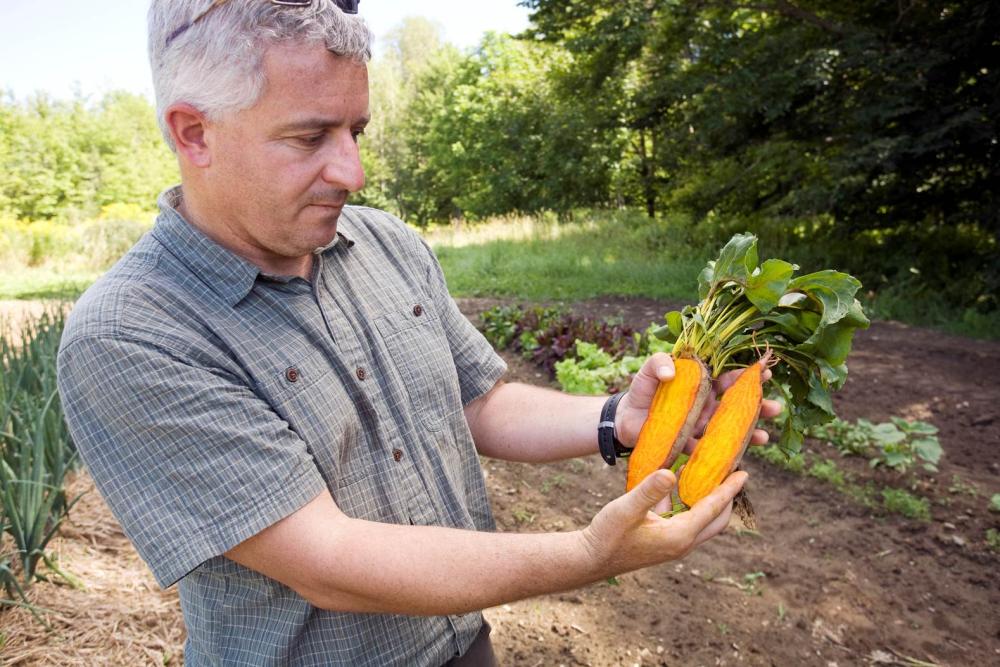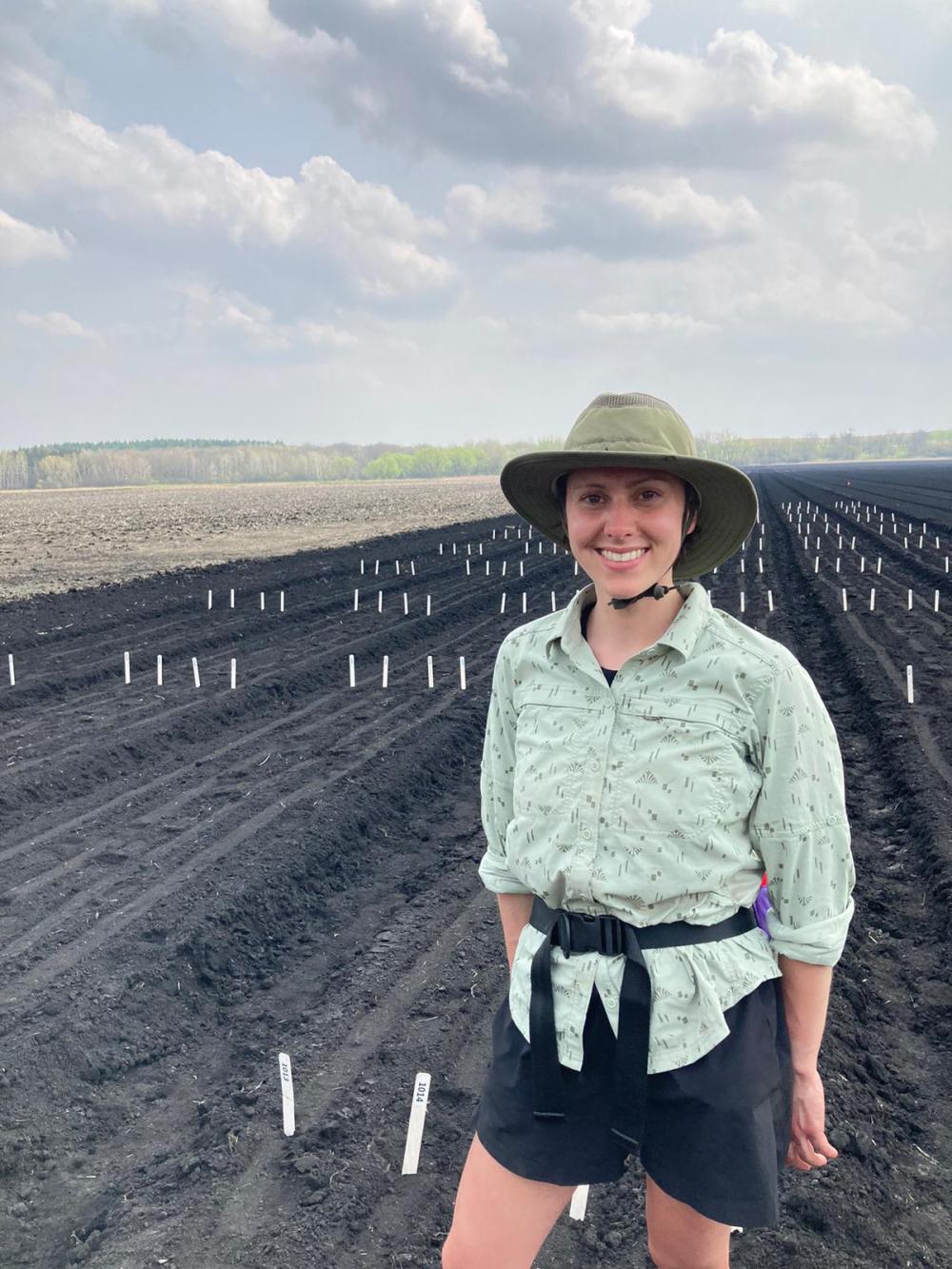6 min Read
In the latest in our plant breeder profile series, Innovature chats with Dr. Irwin Goldman, Professor in University of Wisconsin-Madison's Department of Horticulture.
Innovature: How did you get your start in plant breeding?
Dr. Goldman: I was fortunate to be an undergraduate student at the University of Illinois, a campus where many plant breeders work. I didn't know about plant breeding when I came to the university, but I was interested in many related subjects including biology, genetics, and in particular, evolution. I was fascinated with agricultural science, and was lucky to have Darrell Miller as an advisor. He helped me get a student job in Cecil Nickell's soybean breeding program, where I first learned about plant breeding. I remember thinking that the unique combination of working outside, being involved in food production, working with one's hands, and being engaged in the intellectually challenging process of applied genetics was a perfect combination and a perfect challenge for a fulfilling career. That was almost forty years ago, and I still feel that way.
Innovature: What challenges are you working to address through your work?
Dr. Goldman: I breed carrot, table beet, and onion. These crops are important around the world but there is not a great deal of effort devoted to their improvement in the U.S. There are many disease and pest resistance traits and horticultural productivity traits that have not been well investigated in these crops. F1 hybrids are important in all three of these crops, but the number of inbred lines available is low and inbreds themselves do not generally display much vigor. This is particularly significant when it comes to making seed production more profitable. Sequenced genomes have only recently become available for carrot and beet, and no sequenced genome has yet become available for onion. We are just at the beginning of finding molecular markers linked to useful traits, and continuing our efforts to improve inbred lines for disease and pest resistance, as well as for vigor and seed production. Fortunately, many seed companies have worked to advance breeding and genetics research in these three crops, and together there are a number of excellent opportunities for improvement on the horizon.
[quotation align="right" source="Dr. Irwin Goldman" attribution="Professor, University of Wisconsin-Madison"]
I remember thinking that the unique combination of working outside, being involved in food production, working with one's hands, and being engaged in the intellectually challenging process of applied genetics was a perfect combination and a perfect challenge for a fulfilling career.
[/quotation]
Innovature: What is the most interesting or important plant variety that you've help develop?
Dr. Goldman: We have worked to develop a series of table beet cultivars that are low in earthy flavor, caused by the volatile terpernoid geosmin and low in oxalic acid. These cultivars offer an opportunity to consume this vegetable raw, as a sweet, crunchy root vegetable. They provide a new market opportunity for fresh market growers and for processors who make minimally processed products. We are also interested in developing improved carrot and onion cultivars through improvements in their inbred parents.
Innovature: Are you using newer breeding tools like gene editing?
Dr. Goldman: Yes. Our lab is collaborating with the lab of Patrick Krysan in the Department of Horticulture to develop a haploid inducer system in carrot through gene editing. This project is being led by Chandler Meyer, a Ph.D. candidate in Plant Breeding and Plant Genetics. Chandler has developed a protoplast transformation and regeneration system in carrot that is capable of editing an endogenous gene in the carrot plant without requiring incorporation of a transgene in the carrot genome. This editing system has allowed Chandler to generate point mutations in the Centromeric Specific Histone H3 (CENH3) gene, which in turn may have the potential to cause haploid induction. A haploid is a plant with only half the chromosomes of a typical plant, and this haploid can be easily doubled to make an instant inbred line.
The CENH3 mutants she has generated have been crossed with wild-type carrot plants and Chandler is in the process of evaluating the ploidy levels of these progeny. If haploids can be induced with this system, they would allow carrot breeders to more easily develop inbred lines to use as parents in making F1 hybrids. One of the most challenging parts of the carrot breeding process is the time it takes to develop new parental inbred lines, and the haploid inducer may provide an opportunity for enhancing the efficiency of this key step in carrot breeding.
Innovature: What's the most common question or misperception you hear about plant breeding?
Dr. Goldman: Since the mid-1990s, it seems that many consumers think plant breeding is all about genetic engineering and genetically modified organisms, and these perceptions have caused some consumers to regard plant breeding with fear and skepticism. While genetically modified organisms are certainly an important part of the plant breeding landscape, they represent a very small proportion of the work that goes on in many horticultural crops. For the great majority of beet, carrot, and onion breeding; the work has been proceeding in a very conventional way, and the produce consumers buy at markets and grocery stores are by and large the product of conventional plant breeding. When consumers get a chance to talk to a plant breeder, they often express satisfaction upon learning that the plant breeder if spending most of their time crossing one type with another and trying to select the best progeny for farmers to grow and consumers to eat. And they also become interested in learning more about how plant breeders develop better cultivars and in providing their opinions about what they like and don't like. These conversations make a difference - and we plant breeders probably need to do more of that in our future.
[quotation align="left" source="Dr. Irwin Goldman" attribution="Professor, University of Wisconsin-Madison"]
Newer technologies in digital imaging, remote sensing, artificial intelligence, and machine learning have transformed the evaluative part of plant breeding. This allows the plant breeder to not only collect much more data on many more plants than in previous eras, but to probe aspects of their crops and subject these to election in ways that were previously impossible.
[/quotation]
Innovature: When it comes to continuing innovations in plant breeding, what are you most excited about for the future? And what are the biggest hurdles?
Dr. Goldman: One of the biggest changes I've seen over the last four decades is our ability to obtain vast amounts of phenotypic information on our breeding material through the use of technology. Speaking just about horticultural crops, which are often selected for color, shape, flavor, texture, postharvest shelf life, and many other characteristics, tremendous challenges have existed for measuring all of the traits one would like to measure. Screening large numbers of samples required very susbstantial resources, time, and opportunity. And this often meant that breeders were limited in the size of their breeding populations. However, newer technologies in digital imaging, remote sensing, artificial intelligence, and machine learning have transformed the evaluative part of plant breeding. This allows the plant breeder to not only collect much more data on many more plants than in previous eras, but to probe aspects of their crops and subject these to selection in ways that were previously impossible. I suspect that advancements in phenotyping will be an important part of the rapid advancement of plant breeding in the coming century.
One of the biggest challenges I see is to try and maintain diversity in the various global streams of plant breeding. Over the past 50 years, the private sector has grown tremendously and now represents global plant breeding on a level not previously seen. The public sector in many countries has reduced its efforts, based in part on funding losses and changing models at universities. Governmental programs at the federal level in plant breeding continue to be strong in some areas, and in certain countries. Not-for-profit entities and freelance plant breeders are also important in this equation, and they provide some of the plant breeding activities that are not practiced by others in the public and private sectors. One of the challenges I see is to keep as many of these streams strong and productive, and to ensure that diversity in the plant breeding and seed system is fostered for the good of agriculture and humanity.


